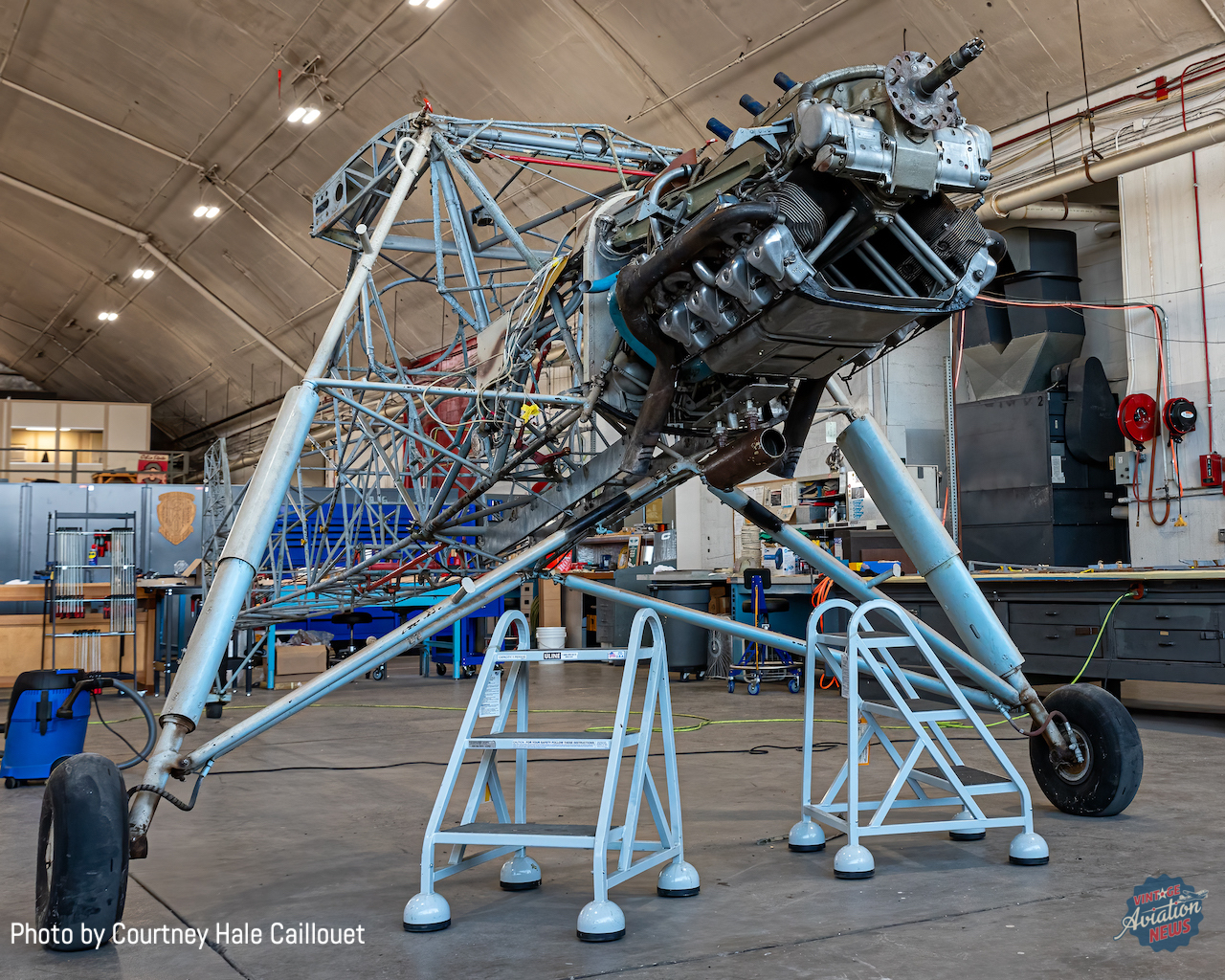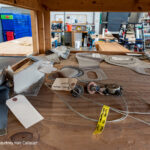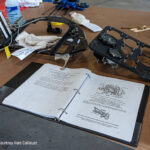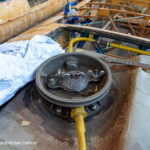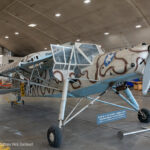By Courtney Hale Caillouet
At the close of 2023, the National Museum of the United States Air Force (NMUSAF) announced they would begin the restoration of their Fieseler Fi-156C-2 Storch, construction number 4389. Storch is German for the word stork; its gangly landing gear provided this nickname. Designed in the 1930s as a light observation and liaison aircraft, it was adopted by the Germans because of its excellent STOL (short takeoff/landing) characteristics. The type is well known for being used in the mountaintop rescue of Benito Mussolini, where other fixed-wing aircraft would certainly not have succeeded. It was produced well into the ’50s, with additional healthy sales to the civilian world.

The restoration team at the NMUSAF has completely disassembled the Storch. The fabric – which was cotton and has likely been on the aircraft since it left Europe in 1973 – has been removed from the fuselage and wings. The tail feathers and control surfaces are yet to be stripped, but will eventually receive the same treatment. All the parts and their related hardware have been documented and labeled, awaiting reassembly. The team is currently working to refinish metal and wood surfaces, removing old paint and glue, as well as decades of dirt and grime.
As of now, no serious corrosion or deterioration has been found. At the time of writing the fuselage was being blasted with dry ice – this paint is not original and will be removed from the structure for re-coating, and although some of the original paint has become visible during this process it is not able to be preserved. As of now, the team believes that the engine can remain attached to the fuselage for the entire process, but that could change as things progress. With the aircraft having been displayed on the ceiling and out of the public’s direct view, some of the gauges had been removed from the cockpit panel. These were placed in storage and will be reinstalled for the final restoration.
Recommendations for the livery were submitted for approval, with a final decision being released on March 19th: “The NMUSAF is going to go with the Deutsches Afrika Korps (DAK) Desert Camouflage scheme. The aircraft will be painted to represent one used by Field Marshal Erwin Rommel, commander of Nazi Germany’s DAK between 1941-1943. Markings will be 5F+XK. Choosing this color, markings, and insignia package will help the Museum better tell the story of Operation Torch in Northern Africa.”
[wbn_ads_google_three]







